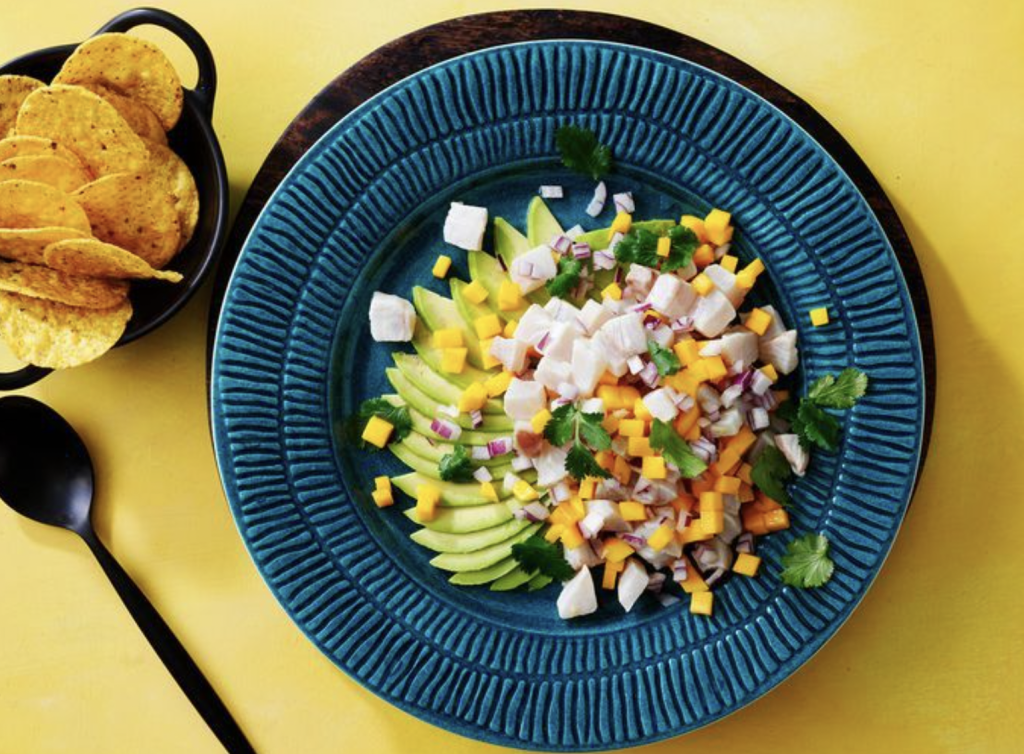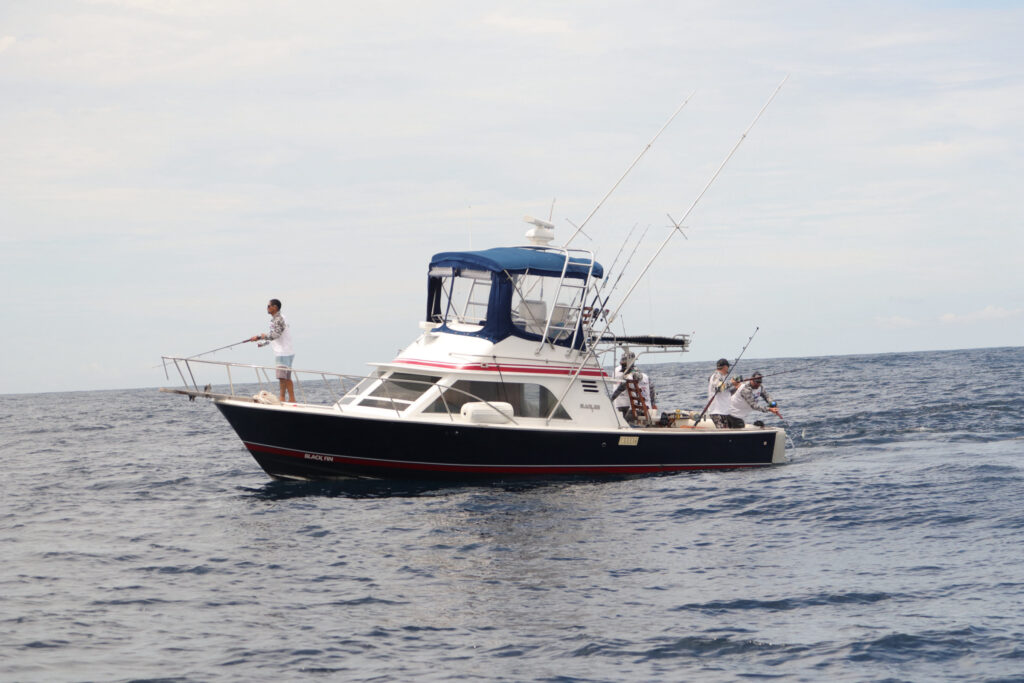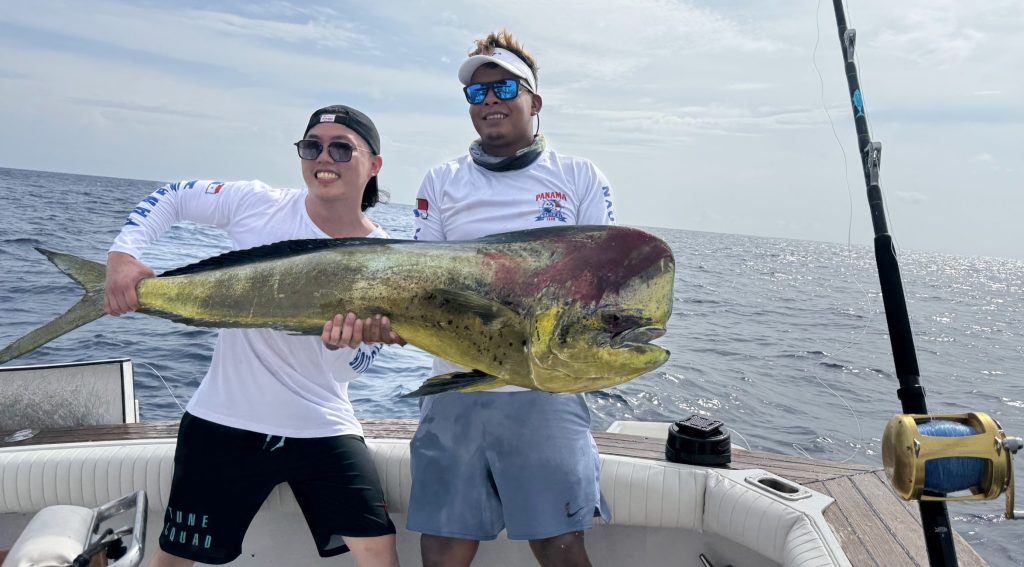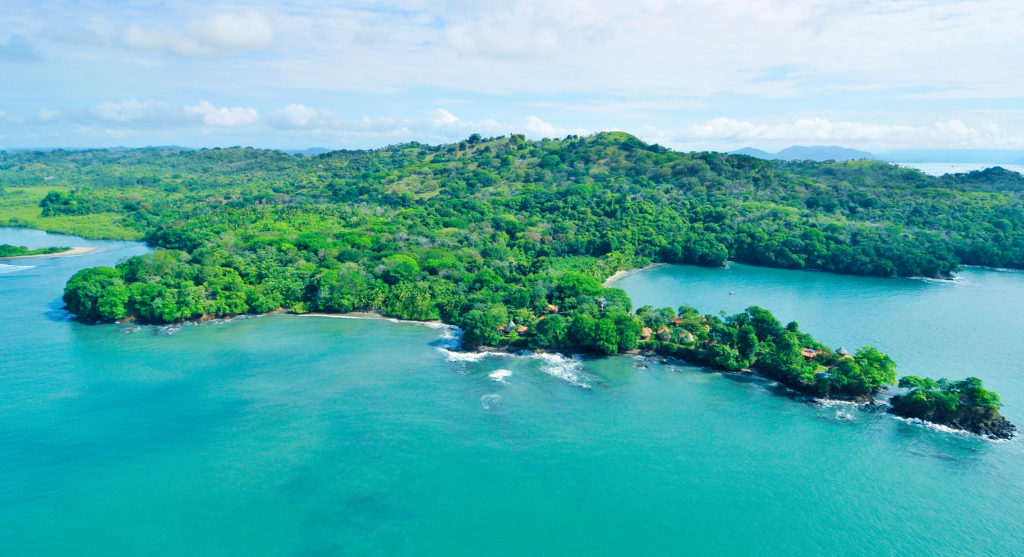Tuna are a saltwater fish that can be found worldwide. They have a sleek, streamlined body, and are among the fastest-swimming pelagic fish, making them an active and agile predator.
Types of Tuna
Tuna are part of the saltwater Scombridae family, which also includes mackerels. Within this family, there are two groups of tuna, the Thunnini and the Sardini. The Thunnini, characterized by their thick bodies and two separate dorsal fins are generally considered the true tunas. The Sardini are characterized by a longer body and sharp conical teeth, and have more of a resemblance to mackerel. The Sardini type of tuna consists of several species of bonitos and dogtooth tuna. Below, we will delve deeper into the most commonly fished Thunnini type of tuna. Within the Thunnini family of tuna, there are 15 types of tuna: Albacore, Yellowfin, Bigeye, Bluefin (Atlantic, Pacific and Southern), Skipjack, Blackfin, Bullet, Frigate, Kawakawa, Little Tunny, Longtail and Slender.
Albacore Tuna (Thunnus alalunga)
Albacore tuna have the longest pectoral fins vs any other tuna species and can be found in the North and South Atlantic, North and South Pacific Ocean, Mediterranean Sea and the Indian Ocean. They prefer temperate seas and very rarely frequent near shores. Albacore is typically the type of tuna found in canned tuna and they have the whitest flesh. You can find 2 types of canned tuna, one of them is just albacore or white tuna, and the other is light tuna which is often a mix of different tuna species. Albacore has a higher mercury content (almost 3 times higher) than light tuna so it shouldn’t be eaten excessively.
Yellowfin Tuna (Thunnus albacares)
As the name suggests, they are characterized by their bright yellow finlets. Yellowfin tuna can be found in the tropical and subtropical waters of the Atlantic, Pacific and Indian Oceans. Although they are deep-sea pelagics, they sometimes frequent coastal waters. Yellowfin are also referred to as ahi tuna, which is the Hawaiian name for yellowfin tuna.
Yellowfin tuna work closely with dolphin in the eastern Pacific. They appear to know that dolphin will find the baitfish, and once found, the tuna will help to corral them into a spherical shape and push them towards the surface. Anglers in eastern Pacific can enjoy watching this symbiotic phenomonom, often referred to as a tuna frenzy.
Tuna frenzies occur when schools of tuna stack bait (blue runners) on the surface. The bait are stuck with nowhere to go, and pack themselves into tight balls composed of thousands and thousands of fish. When the baitfish are in this spherical formation, the tuna attack from all angles. It one of the most incredible marine spectacles to witness.
Bigeye Tuna (Thunnus obesus)
Bigeye tuna can be found in the tropical and subtropical waters of the Atlantic, Pacific and Indian Oceans. They have a dark blue back and look pretty similar to yellowfin tuna, but their finlets have black edges, whereas yellowfins’ finlets do not. They usually swarm at deeper depths than skipjack and yellowfin tuna, and therefore have a higher content of fat in their bodies for insulation. Bigeye tuna has a mild, meaty flavor, and their higher fat content makes bigeye tuna a favorite amongst sushi lovers.
Bluefin Tuna (Thunnus thynnus)
Bluefin tuna are considered the king of tunas, and the ultimate catch-of-a-lifetime for many anglers worldwide. There are 3 types of bluefin tuna: The Atlantic Bluefin(Thunnus thynnus), Pacific Bluefin (Thunnus orientalis) and Southern Bluefin (Thunnus maccoyii). They have large torpedo shaped bodies, with dark black-blue on their back and white on the belly and sides. Bluefin tuna are top predators and grow slower than other tuna, with a longer lifespan of up to 20 years. They reach maturity at around 6-7 years old, at an average weight of 300 pounds. Bluefin tuna can grow to impressive sizes, with the larger ones weighing in over 1,000 pounds. The Atlantic Bluefin is the largest tuna species and can be found in the Eastern and Western Atlantic Ocean (from Newfoundland to the Gulf of Mexico) and the Mediterranean Sea. As the name suggests, the Pacific bluefin can be found in the sub-tropical and temperate waters of the Pacific Ocean, and the southern bluefin in the Eastern Indian and South-West Pacific. Bluefin tuna is also the most expensive type of tuna, which is typically used in sushi.
Skipjack Tuna (Katsuwonus pelamis)
Skipjack tuna can be found in tropical, subtropical and temperate waters of all oceans. They are one of the smallest and most commercially fished type of tuna, accounting for over half of the world’s tuna catch. Skipjacks form very large schools, quite often around large formations like a whale shark or large floating debris. It is widely believed that they use these formations as meeting places to merge with other schools, or increase their numbers for reproduction or hunting purposes. Skipjack tuna is most commonly found in canned tuna.
Blackfin Tuna (Thunnus atlanticus)
They can be found in the tropical and warm temperate waters of the western Atlantic Ocean, anywhere between Brazil to North Carolina. Blackfin tuna have very dark or almost black fins. They usually swarm near the surface and can be found in large schools and the larger Blackfin Tuna usually stay deeper in the water column.
Other Tuna
Other tuna in the Thunnini family include the Bullet, Frigate, Kawakawa, Little Tunny, Longtail and Slender Tuna. They are the smaller types of tuna which are serve as an important food source for larger predatory species, including other tuna, billfish, and sharks. They often gather in large shoals and prowl estuaries and rivermouths.
Which Tuna Species is most commonly found in grocery stores?
The tuna we find in stores is likely one of the following: skipjack, albacore, yellowfin, bigeye or bluefin. One of the most common forms of tuna bought is canned tuna. Most canned tuna are light tuna (typically skipjack or yellowfin) or white tuna (just albacore). Tunas that are usually sold in the form of loins or steaks are bigeye, yellowfin, bluefin and albacore.
Generally speaking, bigeye tuna tend to be fattier than yellowfin. Their color, again, generally speaking, may be a darker red as well. Yellowfin tuna can be a brighter, lighter color. Bluefin tuna are considered the most valuable because they can store a lot of fat in their musculature, and this means greater flavor and texture.
What tuna species is used in Sushi?
The most expensive type of tuna we eat is the bluefin tuna which is most commonly used in sushi. This hasn’t always been the case, in fact, until the 1960’s sushi wasn’t a big deal in America and bluefin tuna was used mainly in pet food. The price increase was primarily driven by America’s increase in demand for fatty tuna in sushi. Shortly after, the Japanese started to prize bluefin tuna too, and prices exploded. In fact, the majority of today’s U.S. Atlantic Bluefin exported tuna catch is sent to sushi markets in Japan (source). Yellowfin tuna (also referred to as ahi) can also be found in restaurants in the form of sashimi, sushi topping or as a steak.
Cost of tuna
Tuna is one of the world’s favorite fish, due to its availability, versatility, taste and nutritional value. It has become both a worldwide budget food source as well as one of the most luxurious ingredients. Market dynamics, global trade patterns, seasonal variations, are all defining determinants for the price of tuna.
- Albacore and skipjack tuna are the cheapest options, averaging around $25-$30 per pound. Their lower price can be justified due to the size of the fish. A large albacore weighs around 40 pounds, which is quite small for tuna. Once the skin, fins and bones have been removed, there isn’t a lot of usable meat left. Skipjacks lower price point can be explained by its widespread availability.
- High quality yellowfin tuna can cost between $30-$40 per pound.
- Bigeye tuna, having a higher fat content than yellowfin generally has a higher price tag between $40-$200 per pound.
- The cost of blue tuna varies significantly depending on where you source it, cheap bluefins can cost as little as $40 per pound, with a good catch off the shores in Japan can go between $200-$400 per pound. The most prized cut of the bluefin tuna is the otoro or belly area, which is closer to the head of the fish. The otoro is famed as the fattiest part of the fish, with a fat content of around 30-40%, which gives it its delicious flavor. Usually, the larger the tuna, the more expensive it becomes as the older or bigger tuna have a better texture and flavor. The most expensive bluefin tuna, which weight 612 pounds, sold for $3.1 million in 2019 (the equivalent of $4,900 per pound!).
Nutritional Benefits of Eating Tuna
Tuna is high in protein, low in saturated fats and calories and contains anti-inflammatory omega-3 fats. It is also very rich in minerals and vitamins, including vitamin D, B12 and selenium.
Though tuna is very nutritious, it’s also high in mercury compared to most other fish. Mercury has been found to be a neurological disrupter negatively affecting the brain. Therefore, it should be eaten in moderation — not every day. Mercury levels in raw tuna are higher than when it is cooked. You can eat skipjack and light canned tuna alongside other low-mercury fish a few times each week, but should limit consumption of albacore, yellowfin and bigeye tuna.
Why does tuna have a higher mercury content than other fish?
Mercury is absorbed by fish through their gills and through consumption of plankton that is high in mercury. Generally speaking, the larger and older the fish, the higher the mercury levels, as they consume large numbers of smaller fish that feed on mercury-rich plankton. Furthermore, since tuna are higher up on the food chain, they tend to retain more mercury in their fats.
Booking a Panama tuna fishing package
Panama is well known for its large yellowfin tuna during the months of April through July. Consider booking a vessel with a fighting chair if you are serious about landing a large 350 lb cow tuna. Our guides understand the habits and habitats of the tuna, which can make all the difference. At Panama Nautical Club, you can choose between 5 sportfishing boats including 33ft BlackFins and centre consoles. Vacuum sealing of your catch is also available during your stay. If you are planning a Panama Tuna Fishing Trip and need some advice please don’t hesitate to contact us.




